Paid media can be tough. Whether it’s PPC or social media ads, getting the right message in front of the right people is one of the most important elements for success. Get it right, and you attract an audience who need exactly what you need to offer. Run campaigns without tighter targeting, however, and you risk pouring money down the sink.
So, how do you get your messaging in front of specific segments of your audience? The answer: contextual targeting. In this article, you’re going to learn exactly what contextual targeting is and how to apply it to your current advertising efforts, with examples from brands who are crushing it right now.
What is Contextual Targeting?
Contextual targeting, in the PPC world, is a process that selects ad placements in the Display Network based on keywords, topics and other factors.
How does it work? First, Google Ads figures out what the core theme is around your website by analyzing your content. Your content is then matched against keywords, selected topics, location, browsing habits and many other factors.
Getting Started with Contextual Targeting
As you can see, contextual targeting allows for hyper-personalized advertising. By selecting specific topics and pairing them with the content on your website, your ads are likely to appear on relevant publications, blogs and websites.
Here’s how the process works:
- Select your keywords and topics: Start by simply adding target keywords and topics to your Display Network ad groups. These topics allow you to focus on broader themes, which you’ll understand more of shortly.
- Google Ads analyses potential placements: This is to figure out which websites are most relevant to your targeting settings. To do this, Google analyzes the text, language, page structure and internal links on each website.
- Your ad gets placed!
Google Ads selects placements depending on the type of targeting you’ve opted for:
- Content keywords: Your ad gets placed when your target keywords match a website/publication’s central theme. For example, let’s say you run an ad to sell a new brand of coffee, targeting keywords like “ethically sourced coffee.” Google Ads would target relevant, individual pages to place your ad.
- Topic: Your ad is placed on a website when it matches the general theme of your chosen topic. Using the coffee example above, Google will place ads on websites that have a heavy focus on coffee.
This is the most basic form of contextual advertising, but it goes far deeper than that. Let’s look at two other powerful methods of contextual targeting: behavioral and native advertising.
Behavioral Advertising
We’ve talked about targeting through contextual keywords and topics. But there’s another powerful method of targeting your audience through display ads: behavioral advertising.
Behavioral advertising is where you serve your ads to users based on their online behaviors. This can include:
- Website’s they’ve visited
- Which pages they clicked-through to
- How long they spent on the site
- How recent the visit was
- How they interacted with the website as a whole
By collecting this data, a user persona is created that paints a broader picture of the individual’s browsing habits. Users with similar behaviors can be grouped together into the same pot, which we call segments.
How Websites Track Their Users
In order to serve the right ads, websites need to first track this behavioral data. There are several ways that webmasters can do this, but the two most common methods are:
- HTTP Requests: A piece of javascript, or “tracking pixel,” sends information about the user to the ad platform (Google Ads, Facebook Ads etc.). Each user is then identified using a cookie, which is placed on the user’s local computer.
- Flash Cookies: Similar to the cookies mentioned above, only they continue to run even when the user has closed the browser. They can also store more information, up to 100kb (while standard cookies can only store up to 4kb).
How to Use Behavioral Tracking to Retarget Customers & Users
Using this behavioral data, you can then serve ads across various networks related to the content, products and pages that users viewed on your website.
For example, when someone browses a specific brand of shoe a clothing website, you can serve ads related to that exact product to entice them back and make a purchase.
Let’s focus on the two most popular advertising networks: Google Display Ads and Facebook Ads. In Google Ads, you’ll need to create new audiences. To do this, you must create a remarketing list.
In order to start tracking behavior, you’ll need to add the remarketing tag snippet to your website. Check out this documentation from Google for more on how to do this.
Once this installed on your website, head to Google Ads and select Tools, followed by “Audience manager” under “Shared library:”
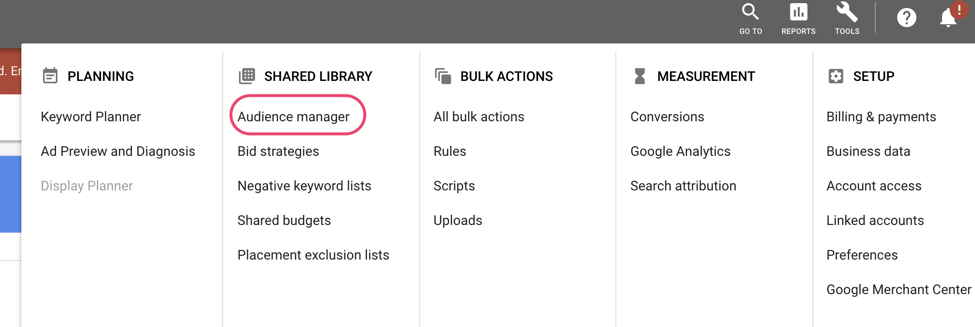
Under the “Remarketing” tab, click the blue “add” button and select “website visitors:”
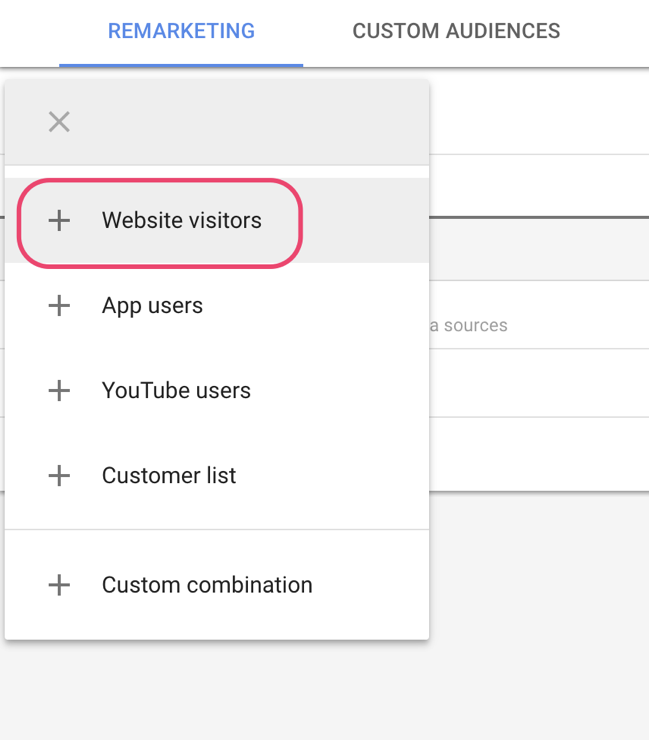
Select the rules for your new audience. For example, visitors to a specific page on your website. Go through the rest of the audience setup, and voila – you can now serve specific ads to visitors of these pages across the Google Display Network.
Facebook works in a similar manner. Here, you’ll need to set up a business Facebook page and an ads account. Then, create a Facebook Pixel and add the javascript to your website. Check out this complete documentation from Facebook themselves on how to do this.
Once you’ve added the pixel to your website, head to your Ads Manager and select “Audiences” under “Assets” from the menu:
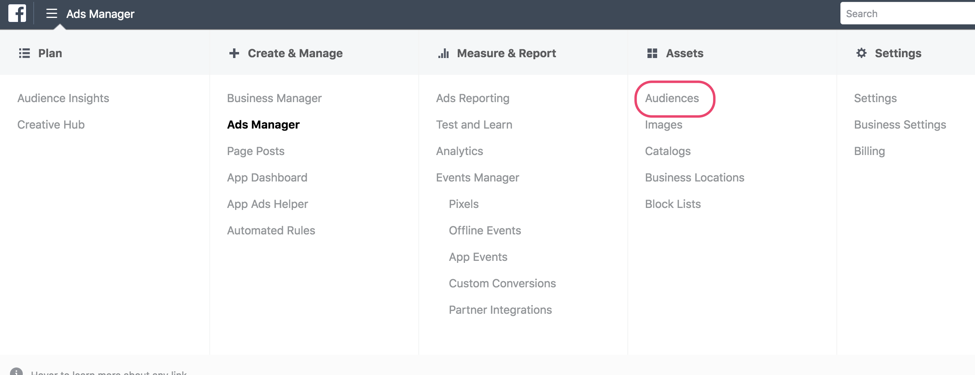
Click the “Create Audience” button, followed by “Custom Audience” and then select “Website Traffic:”
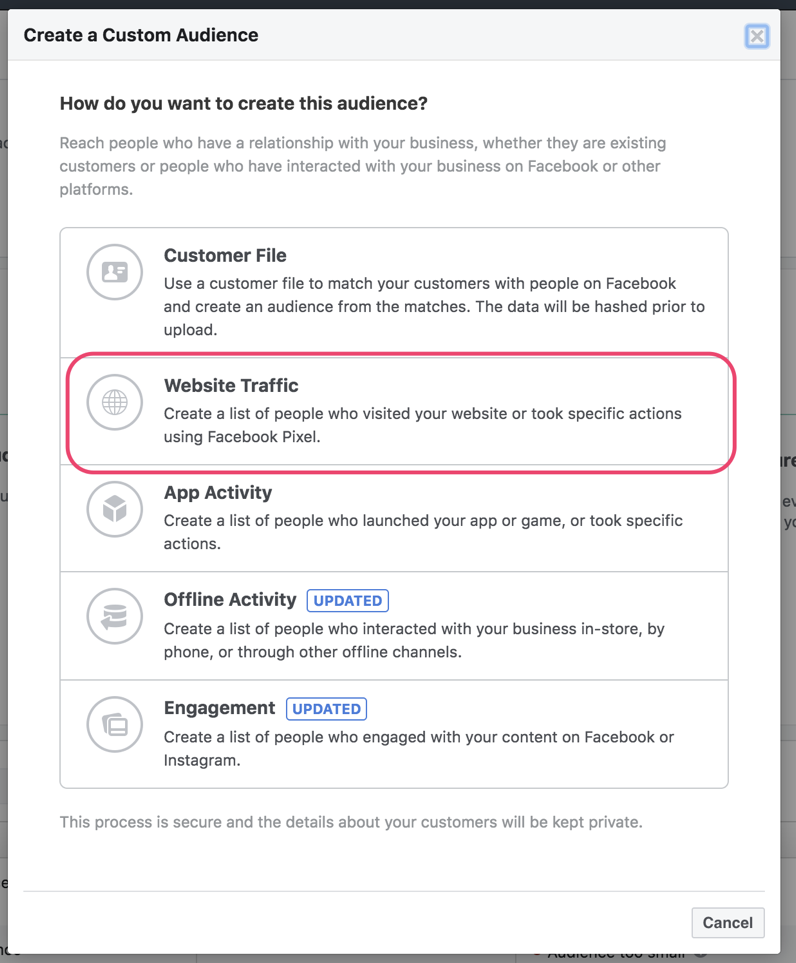
Note that website traffic isn’t the only way to create a custom audience. If you have an app, you can select users who have downloaded or interacted with it in some way. Same goes for your Facebook page.
In the next dialog, select your pixel and, under the “All website visitors” dropdown, select a clause that fits your targeting needs:
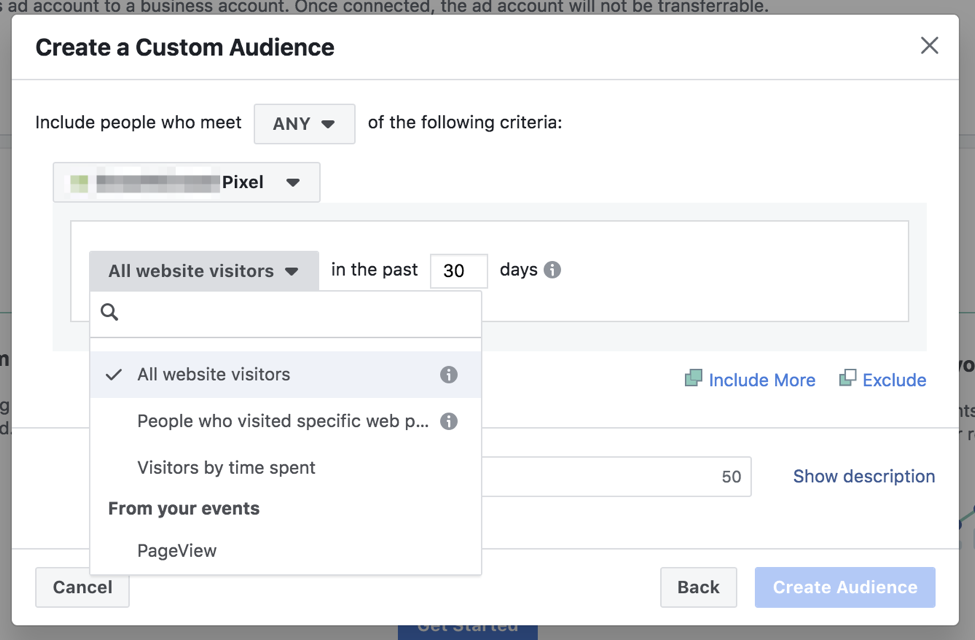
Once you’re ready, click “Create Audience.” You’re now ready to serve highly targeted ads to these website visitors.
3 Effective Remarketing Ad Examples
Looking for ideas to use on your newfound targeting superpowers? Take inspiration from these brands who do it well, starting with Best Buy:
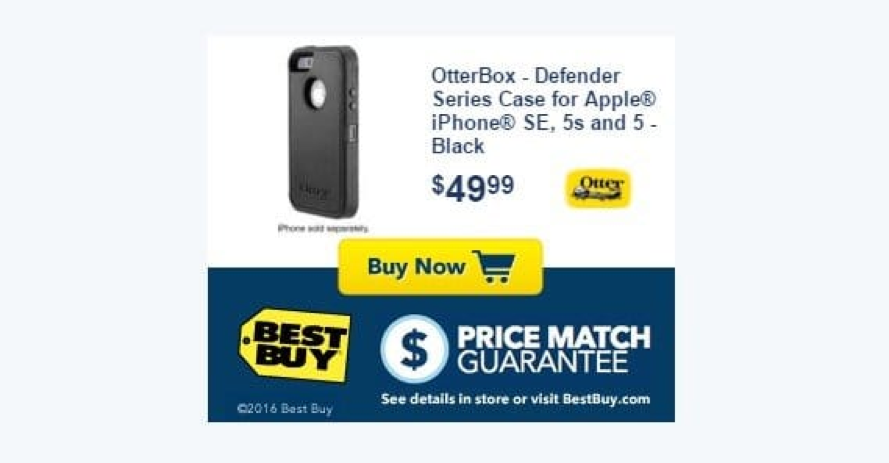
Here, Best Buy uses retargeting to upsell relevant products after a customer has already purchased. In this case, the product is a phone case, served to a customer just after they’ve purchased the relevant iPhone.
This is a great demonstration of continuing the customer journey after a purchase is made. Don’t just “reset” the experience you provide. Instead, find new ways to add more value.
Next up, this example from Birchbox uses remarketing to overcome one of the biggest hurdles when converting visitors into customers: trust.

It’s likely this ad is served for those visiting the Birchbox homepage or another conversion-driven landing page. Here, they blend social proof with FOMO. Not only do they illustrate how happy their customers are, but entices them to see what they’ll miss out on.
Finally, this example from Handy goes right for the jugular, providing an enticing offer to get new customers on board:

These ads are great for getting new customers across the line. Use multiple layers of targeting when going in for the hard-sell. For example, when they visit 3 or more times and have looked at your sign-up/product page.
Native Advertising
While we’re on the subject of contextual targeting, it’s good to note another relevant format: native advertising. Native advertising is a form of paid marketing, similar to display and remarketing ads. The difference is that they mimic the look and feel of blog posts, social content and other forms of media.
For example, editorial-style native ads often appear at the bottom of blog posts. These are based on topics relevant to the content and interests of those reading it:

Native advertising is appealing to many advertisers and media buyers. Here’s why:
- 70% of consumers prefer to learn about products through editorial content.
- It’s an antidote to ad fatigue. While display ads aim to grab attention with promotional messaging, native advertising is value-driven and entertaining in nature.
- Consumers are getting smarter, but according to Stanford University, they don’t mind that native advertising is a form of advertising.
- It allows advertisers to create a stronger level of trust by adding value up front.
To get started with native advertising, you either need to purchase from a publication or website directly, or use a dedicated platform. Here are some examples:
- Taboola: Serves native ads to more than 1 billion users across websites like Fox Sports and USA Today, as well as niche blogs.
- Outbrain: A self-serve platform for owned content, using intelligent filters to monitor the quality of ads.
- Nativo: Nativo’s differentiator is ensuring that native content fits the look and feel of the branding for each website on their network.
3 Native Advertising Examples with Engaging Content
Now you know how native advertising works, let’s check out some examples in the field, starting with this sponsored NYT article from Dell:
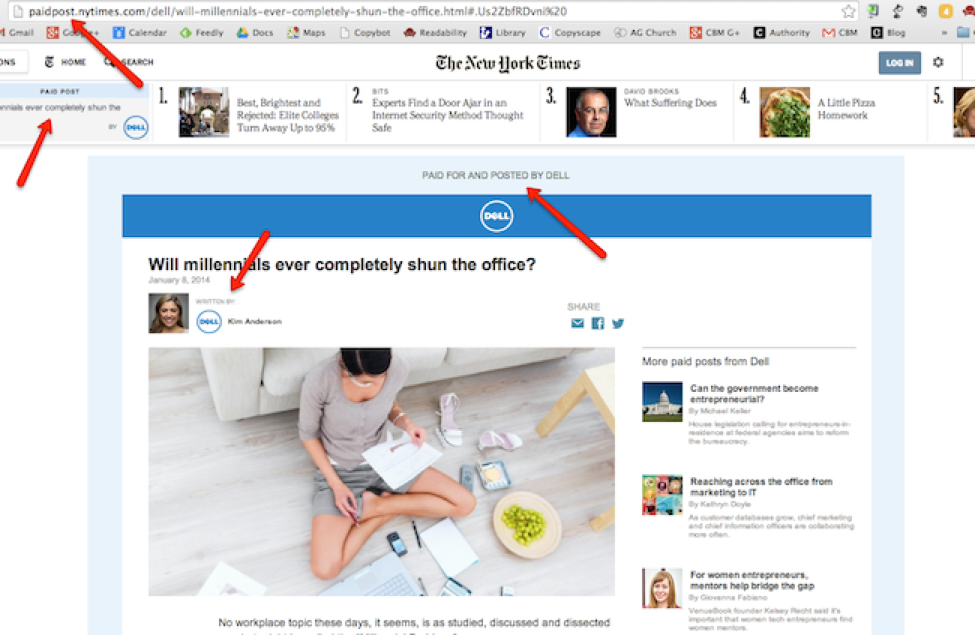
Here, the article does two things well. Firstly, it makes it very clear that this is a branded piece of content. Secondly, and most importantly, is that it focuses on a truly high-quality piece of journalism that appeals to the particular segment Dell wish to target.
This is key. Native content works well because it adds value. When testing native advertising, don’t write about your products or services. Focus on the needs, interests and desires of your audience first.
The next example is slightly more sophisticated. Here, Netflix teamed up with Spotify to create curated playlists based on which “Stranger Things” character you are (which is selected based on your listening habits):

This goes to show that native advertising can come in mammoth-like shapes and sizes when you collaborate with other brands.
Finally, this example from shaving brand Harry’s goes to show how native advertising can deliver great information and a great experience:
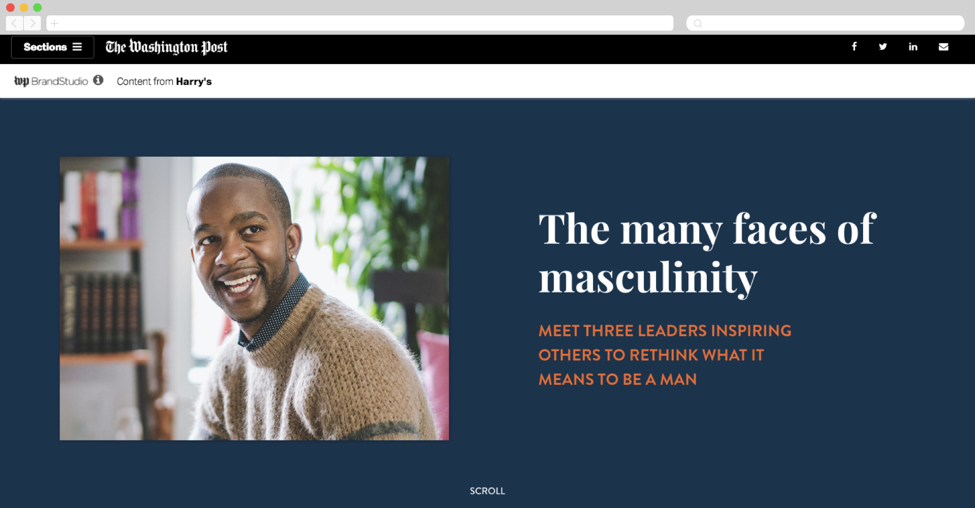
When partnering with publications directly, look for ways to go the extra mile. Work with brand and UX experts to ensure you create something that works for both of you.
Final Thoughts
We’ve dug deep into the realm of contextual targeting. Back in the day, all we had were keywords to understand our customers and their needs.
From behavioral triggers to native advertising, contextual targeting is just that – advertising that works within the context of the platform you’re advertising on. And it works incredibly well, which is why Google has poured so many resources into getting it right.
Image Credits
Feature Image: Unsplash / rawpixel
Image 1-5: via Google Support
Image 6: via Grow Traffic
Image 7: via Unbounce
Image 8: via Wishpond
Image 9, 11: via Outbrain
Image 10: via Copyblogger
Image 12: via Nudge



